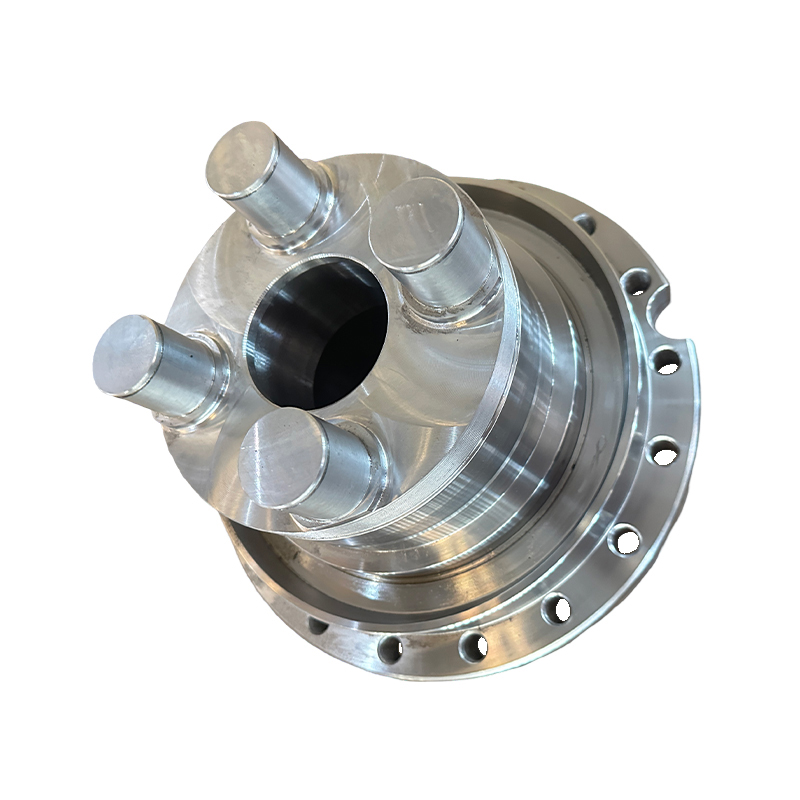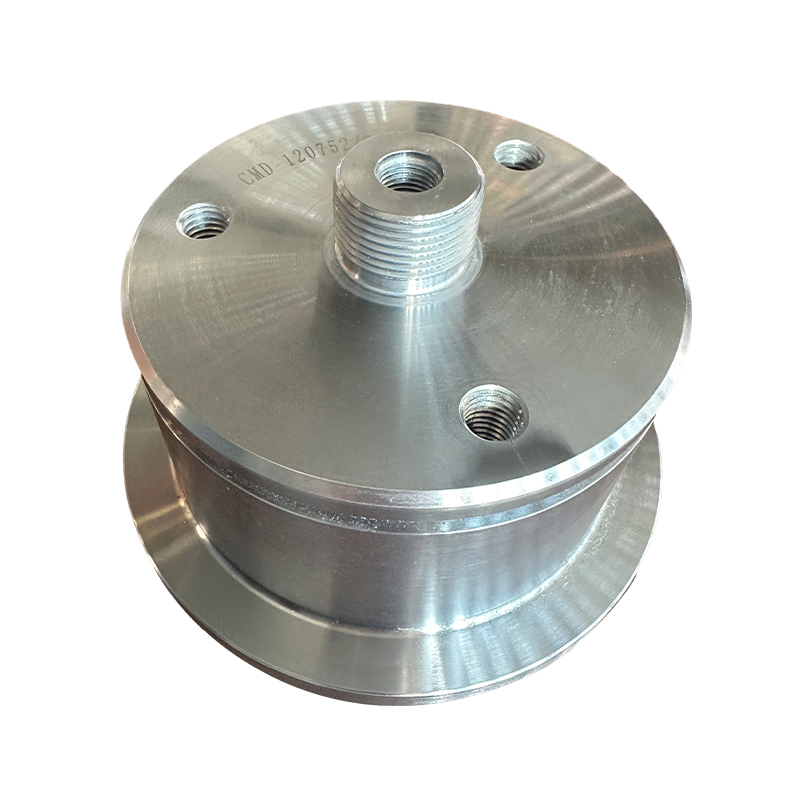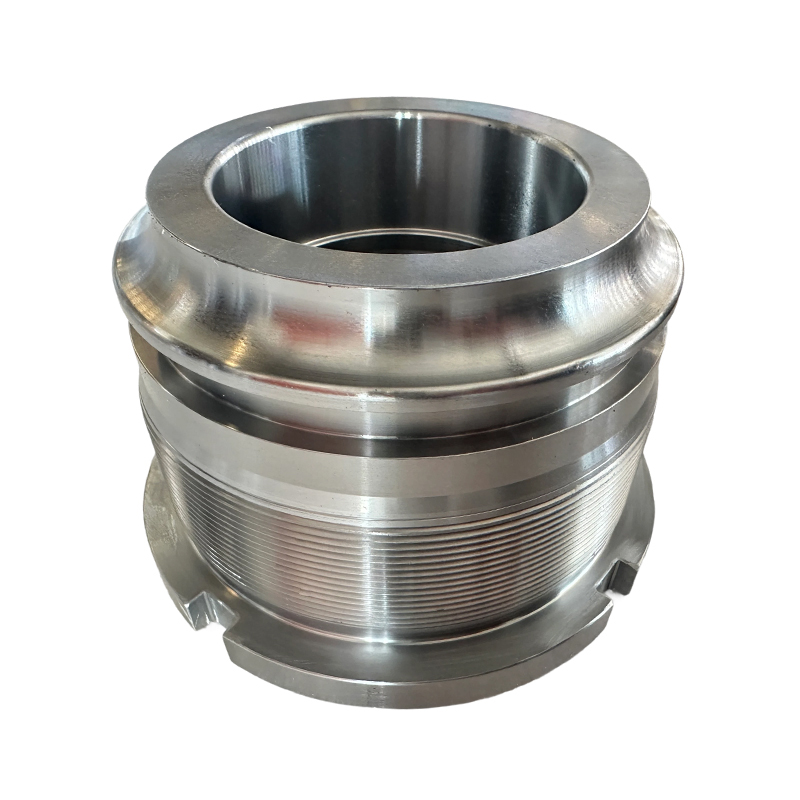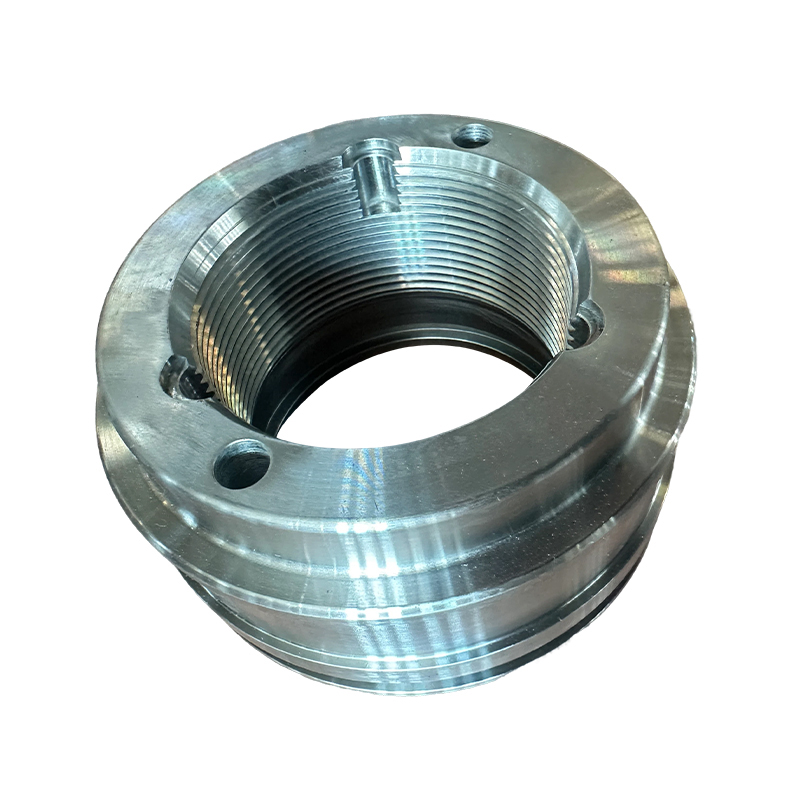How can the surface treatment technology of large flange, an engineering machinery accessory, improve its wear resistance?
Release Time : 2025-10-21
Large flanges, crucial components for connecting pipes and equipment, directly impact the equipment's sealing, durability, and operational efficiency. Improving wear resistance lies in optimizing material properties, reducing friction damage, and slowing corrosion through surface treatment technologies, thereby extending flange service life. The following analysis focuses on four key dimensions: material selection, surface modification, coating processes, and process optimization.
Material selection is fundamental to improving wear resistance. Large flanges, such as those for construction machinery, must withstand high pressure, high temperature, and complex media environments, requiring materials with high hardness, high toughness, and corrosion resistance. For example, alloy steel or stainless steel can significantly improve flange wear resistance. In particular, alloying elements containing chromium and nickel can form a dense oxide film, minimizing material loss during friction. Furthermore, material pairings with low mutual solubility can reduce the risk of adhesive wear. For example, the combination of copper alloy and steel effectively minimizes metal transfer between friction pairs.
Surface modification technologies enhance wear resistance by altering the flange's surface structure. Heat treatment processes such as carburizing and nitriding increase surface hardness, forming a high-hardness compound layer that resists micro-cutting and fatigue wear. Shot peening uses high-speed projectiles to impact the surface, introducing residual compressive stresses that inhibit crack propagation while also refining the grain size and improving wear resistance. Laser shock peening utilizes high-energy laser pulses to generate shock waves, causing plastic deformation of the surface material, forming a hardened layer and a compressive stress field, significantly enhancing wear and fatigue resistance.
Coating processes are a key means of improving wear resistance. Carbide coatings, such as tungsten carbide (WC), are applied to the flange surface via thermal spraying or physical vapor deposition (PVD) techniques, forming a high-hardness, low-friction protective layer that effectively resists abrasive and adhesive wear. Ceramic coatings, such as aluminum oxide (Al₂O₃), offer excellent high-temperature resistance and chemical stability, making them suitable for use in corrosive environments. Furthermore, polymer composite coatings can be filled with wear-resistant particles (such as silicon carbide or aluminum oxide) to further enhance wear resistance while also providing self-lubricating properties to reduce frictional losses.
Surface coating technology involves electroplating or chemically depositing metal or alloy coatings on the flange surface. Chrome plating, due to its high hardness and low coefficient of friction, is widely used to improve wear resistance, particularly in dry or low-lubrication environments. Nickel plating enhances corrosion resistance by forming a protective phosphate film, indirectly improving wear resistance. Electroless nickel-phosphorus alloy (Ni-P) plating requires no external power source, produces a uniform and dense coating, and offers both wear and corrosion resistance, making it suitable for surface treatment of complex flange shapes.
Process optimization must balance treatment effectiveness with cost-effectiveness. For example, whitening stainless steel flanges uses sandblasting or chemical methods to remove oxide scale, restoring surface gloss while avoiding the use of highly corrosive agents like hydrofluoric acid, reducing environmental pollution and health risks. Mirror-finishing treatments employ mechanical polishing, chemical polishing, or electrochemical polishing to significantly reduce surface roughness, thereby lowering friction and wear rate. Coloring treatments use chemical, electrochemical, or high-temperature oxidation to impart a colorful appearance to flanges while also improving corrosion and wear resistance.
In-line repair technology offers an efficient solution for worn flanges. Portable flange end-facing machines can perform lathing repairs on sealing surfaces without disassembling the pipe, restoring flatness and roughness, thereby extending flange service life. Polymer composite repair technology directly repairs worn areas by filling them with wear-resistant materials. Curing within 24 hours allows for immediate operation, significantly reducing downtime.
Surface treatment technology for large flanges used in construction machinery requires a comprehensive consideration of material properties, environmental compatibility, and cost-effectiveness. By optimizing material selection, applying surface modification and coating processes, improving processing procedures, and employing in-process repair technologies, flange wear resistance can be significantly enhanced, ensuring long-term, stable operation of the equipment.







